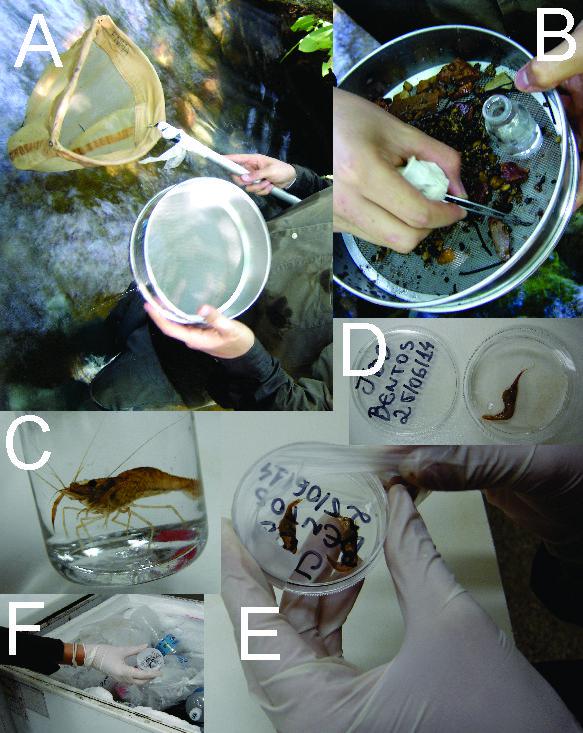Tiago Borges Kisaka
The present study aims to investigate the trophic structure of benthic invertebrates associated with seasonality and micro-habitats in a pristine neotropical streams.
The Brazilian neotropical streams have been experiencing substantial changes with anthropic activities and we have a few knowledges about this community. What is generally known is that the macroinvertebrate trophic interactions can have a strong effect on ecological processes by directly influencing flows of energy and materials in stream ecosystems. By the way, the present project aims to make a profound investigate in the benthic invertebrates in both functional and structural aspects associated with seasonal and micro-habitats heterogeneity in the Brazilian neotropical savanna, one of the most threatened ecosystems in the world. Previous studies showed that the variation of micro-habitat factors within a given site was more important in generating beta-diversity in assemblages than the variation among sites and seasons and water flow velocity better explained the community composition.

Sampling of benthic macroinvertebrates.
The project will be conducted in the Capetinga (15°57'27.42"S - 47°56'32.79"W), Cabeça-de-Veado (15° 53' 23.29" S - 47° 50' 33.06" W), Bananal (15° 41' 59.94" S -
47°59' 24.40" W) and Torto (15° 38' 22.16" S - 48° 0' 1.91" O) streams that are located in the Federal District (DF), Brazil, integrating the Reserve of the Biosphere Cerrado and the Paraná watershed. The region studied has a tropical savanna climate with an average temperature of 22 ° C, average evapotranspiration of 65 mm and monthly rainfall of about 1500 mm per year. There are two distinct seasons: a rainy and hot, which extends from October to April, and another cold and dry, usually from May to September. The energy flow and trophic relationships among the organisms in an ecosystem will be assess using stable isotope analysis of carbon (C) and nitrogen (N). Stable isotope analysis has been an important and advantageous tool in trophic ecology studies to examine resource partitioning, ecosystem fluxes of carbon and nitrogen, to reconstruct diets, and to characterize niche properties.
Analysing trophic relationships among macroinvertebrates and the energy flow in aquatic ecosystems is essential to an understanding of the mechanisms that regulate the ecological integrity of those environments. Lastly, the study will prove that management practices of biodiversity conservation in stream ecosystems should pay particular attention to maintenance or restoration of physical heterogeneity of the Brazilian neotropical streams.